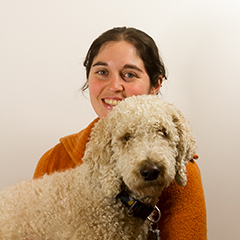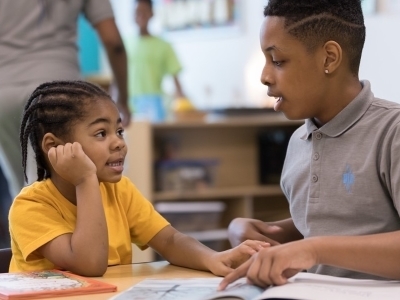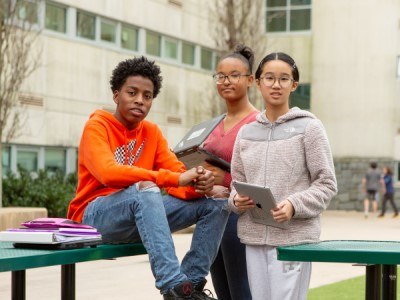Assessment Is for Families
Topics
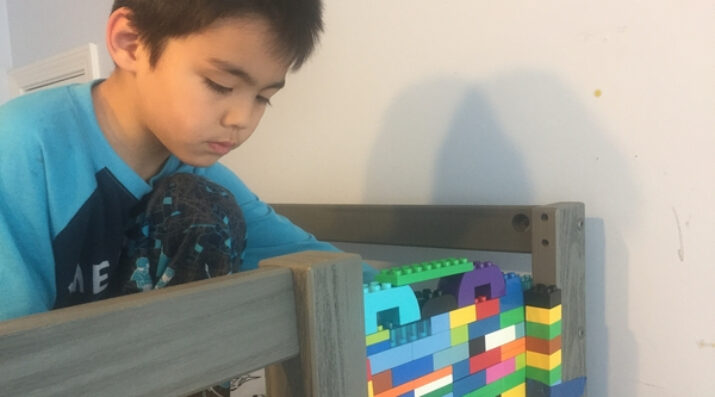
Educators are rethinking the purposes, forms, and nature of assessment. Beyond testing mastery of traditional content knowledge—an essential task, but not nearly sufficient—educators are designing assessment for learning as an integral part of the learning process.
How to recognize and celebrate learning happening at home
Parents trying to homeschool or facilitate remote learning on top of all their other responsibilities have been put in an impossible situation. Even if we are educators as well as parents, when it comes to our own children we encounter frequent arguments, eyerolls, and skirmishes (I’ve got a few fresh bruises this week courtesy of my own 3 and 6 year olds). So we ask ourselves: Are we even doing anything right? Are our kids learning anything at all?
I believe the answers are Yes! and Yes! But this learning might not look the way we expect, so we have to train our eyes to see it. Assessment is a good lens for this, as it tells us how far our learners have come and where they’re going. For learning from home to succeed, parents and families need to be empowered with creative ways to recognize small achievements and shifts in thinking, start keeping track of them, and celebrate their own supporting role. In this sense, assessment during COVID is more important than ever because of what it has to offer learners, families, and teachers alike.
- What can assessment give to learners? Good learning and assessment are all about connection, and that is especially true during a pandemic. We want young people to feel seen and heard in the work they do. Assessing what learners value, whether that’s completing all of their remote assignments or engineering a backyard fort instead, offers them a chance to share and be recognized for their accomplishments.
- What can assessment give to families? Understanding what kids are learning can reveal what we are doing well as impromptu homeschool parents and tell us what else our kids need during this time. Parents are beyond maxed out, caring for children while working or worrying about when they will work again. Those parents need to know that what they are doing matters, and be able to look back and see the successes along the way. Sometimes that success is explaining a tough math problem and sometimes it’s simply sitting with a child while she has a meltdown.
- What can assessment give to teachers? Teachers need to understand the whole family to understand what their student is and is not learning. Now more than ever, since they can’t see their students in person, teachers have to hear about the learning moments after the fact, be it an at-home science experiment or problem-solving in a video game. Assessment can give them visibility into the unique process of learning at home.
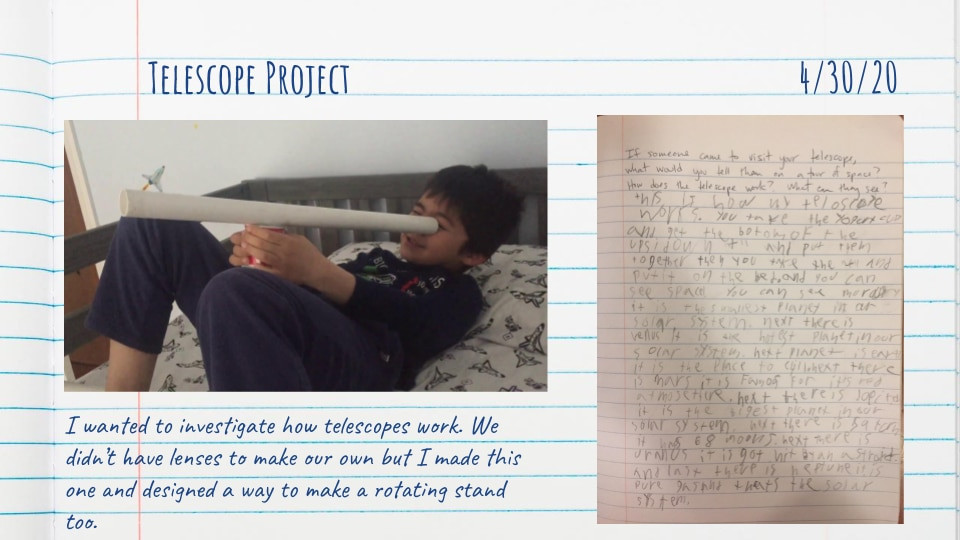
A page from a learning from home portfolio. (Courtesy of Louisa Rosenheck)
What does this look like in practice? How can parents be expected to add yet another responsibility to their already unthinkable workloads? The actual assessment strategies have to be learner-centered, in-the-moment, and fulfilling. They need to make learners and their families feel good about what they’re doing—not all the time, but when there are joyful moments to be captured. Based on my work in ed tech, learning design, and assessment—and after my own first eight weeks as a pandemic parent, these are some of the practices I believe we should look toward:
- Thinking routines: Harvard Project Zero’s work on Visible Thinking provides some structured prompts that can help parents and kids make learning visible. For example, I Used to Think... Now I Think… is a quick exercise that could be incorporated into a family dinner conversation. Of course anything new may feel like work and be met with resistance at first, so making it a part of the regular routine can help everyone know what to expect and hopefully even look forward to it.
- Embedded assessment tools: In the MIT Playful Journey Lab we’ve been exploring ways to capture the moments in which learners demonstrate emerging skills. One example is Maker Moments, a color-coded chart where you track the use of skills or behaviors you care about. This could be adapted to track self-directed learning skills like identifying when you need help, finding a help resource independently, and supporting siblings with their work. By comparing the mix of these skills over days or weeks, families can see what problem-solving and collaboration skills kids are building over time.
- Portfolios: Many project-based and competency-based schools use portfolios or learning journals as a way for students to document and explain their learning, and examples of these and other presentations of learning can be found at Share Your Learning. While most teachers are already using specific platforms to track students’ online work, a separate portfolio can make space for projects and interests that kids are exploring on their own, like cooking or DIY projects around the house, which also build skills that families value right now. A portfolio can be as simple as a Google slide deck or Padlet where kids can add a photo and short description of accomplishments they care about and can then share it with parents, teachers, and peers.
My hope is that if we as parents can use strategies like these to cultivate an assessment mindset, we will strengthen our ability to see learning wherever it is happening. We will understand what is meaningful to our children and be able to elevate and celebrate their accomplishments, big and small. We will know that we’re doing okay as parents in a pandemic.
I believe assessment for families matters in this time because we need to show that even if we can’t get our kids to submit one assignment on Seesaw, we are helping them learn in alternative ways. They are building the skills they need for the pandemic and for whatever comes next.
Photo at top courtesy of Louisa Rosenheck.

